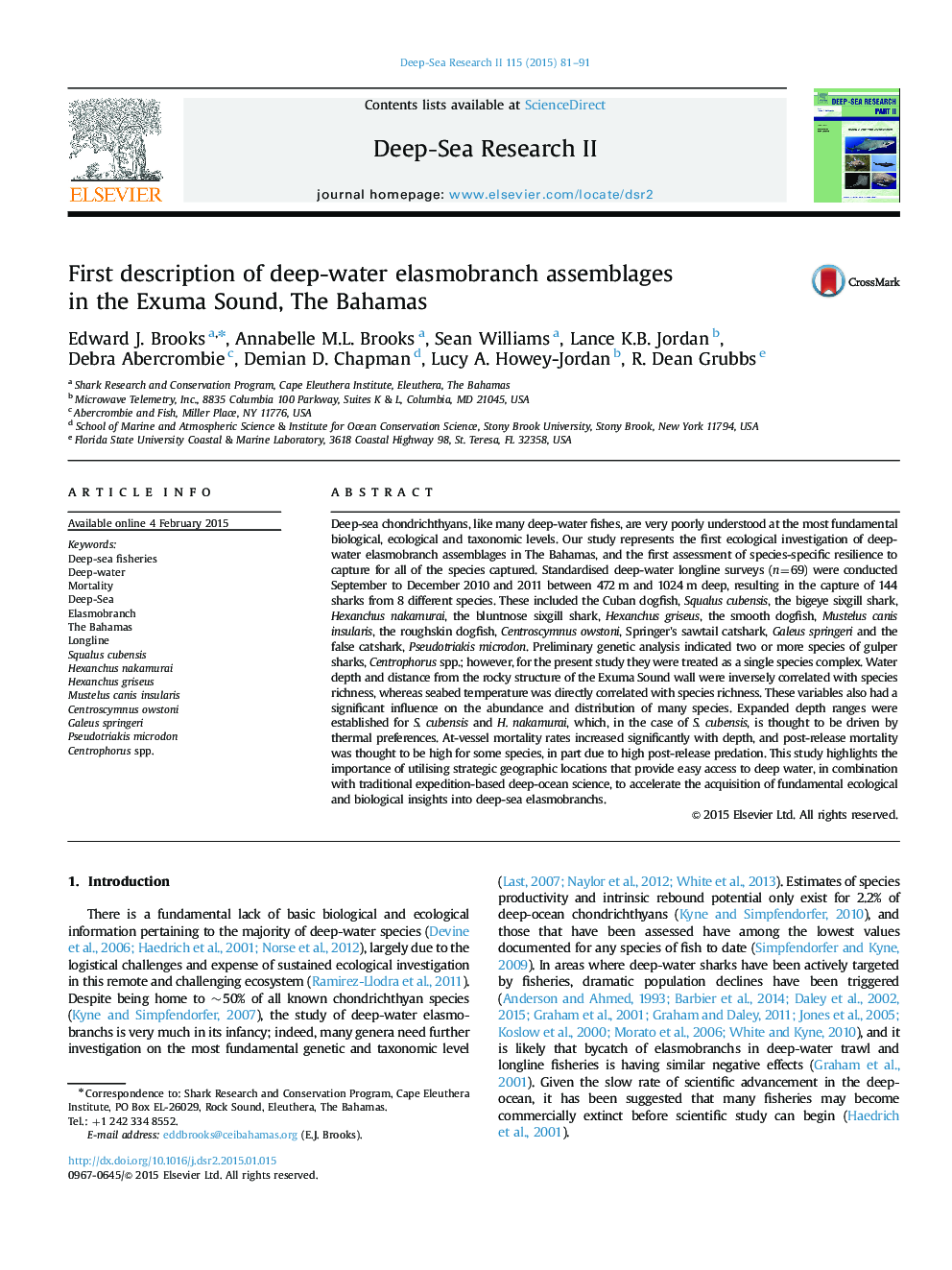| کد مقاله | کد نشریه | سال انتشار | مقاله انگلیسی | نسخه تمام متن |
|---|---|---|---|---|
| 4536255 | 1626425 | 2015 | 11 صفحه PDF | دانلود رایگان |

Deep-sea chondrichthyans, like many deep-water fishes, are very poorly understood at the most fundamental biological, ecological and taxonomic levels. Our study represents the first ecological investigation of deep-water elasmobranch assemblages in The Bahamas, and the first assessment of species-specific resilience to capture for all of the species captured. Standardised deep-water longline surveys (n=69) were conducted September to December 2010 and 2011 between 472 m and 1024 m deep, resulting in the capture of 144 sharks from 8 different species. These included the Cuban dogfish, Squalus cubensis, the bigeye sixgill shark, Hexanchus nakamurai, the bluntnose sixgill shark, Hexanchus griseus, the smooth dogfish, Mustelus canis insularis, the roughskin dogfish, Centroscymnus owstoni, Springer׳s sawtail catshark, Galeus springeri and the false catshark, Pseudotriakis microdon. Preliminary genetic analysis indicated two or more species of gulper sharks, Centrophorus spp.; however, for the present study they were treated as a single species complex. Water depth and distance from the rocky structure of the Exuma Sound wall were inversely correlated with species richness, whereas seabed temperature was directly correlated with species richness. These variables also had a significant influence on the abundance and distribution of many species. Expanded depth ranges were established for S. cubensis and H. nakamurai, which, in the case of S. cubensis, is thought to be driven by thermal preferences. At-vessel mortality rates increased significantly with depth, and post-release mortality was thought to be high for some species, in part due to high post-release predation. This study highlights the importance of utilising strategic geographic locations that provide easy access to deep water, in combination with traditional expedition-based deep-ocean science, to accelerate the acquisition of fundamental ecological and biological insights into deep-sea elasmobranchs.
Journal: Deep Sea Research Part II: Topical Studies in Oceanography - Volume 115, May 2015, Pages 81–91